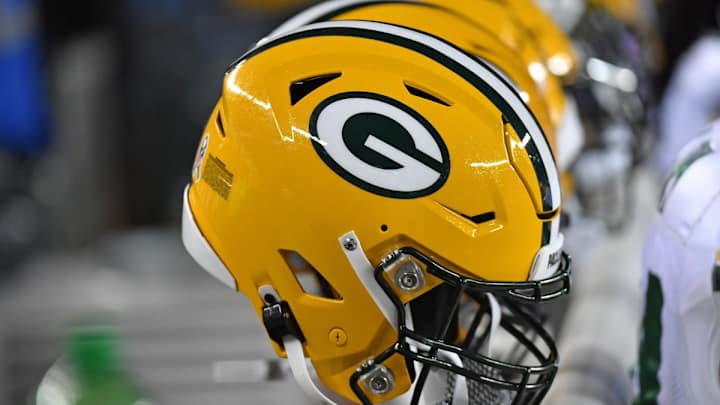Packers Rank in Bottom Third of PFF’s Salary Cap Analysis

GREEN BAY, Wis. – During the 2022 offseason, Green Bay Packers general manager Brian Gutekunst moved boldly to keep a roster together that finished an NFL-best 13-4 but was one-and-done in the playoffs. A series of contract restructures kept the heart of the team together but put future salary caps in peril in hopes of making one more run at a Super Bowl.
“We kind if look at it in a three-year window,” Gutekunst said at the time. “I do think we recognize what kind of football team we have and the opportunity that’s in front of us. But you’re always making sure you can field a competitive team year in and year out. And you’ve got to be mindful of what we’re doing in the future, even though sometimes right now feels like all that matters.”
The aggressive approach ended in disappointment, with the Packers falling short of the playoffs with an 8-9 record. Now, that three-year salary-cap window looks cracked and foggy.
Brad Spielberger of Pro Football Focus and OverTheCap.com looked at all 32 teams’ salary caps through that three-year window. The Packers rank 22nd. That’s bad. What’s worse? In the NFC North, the Chicago Bears are fourth, the Detroit Lions are fifth and the Minnesota Vikings are sixth.
This isn’t all “doom and gloom,” as Spielberger noted and we’ll get into shortly. First, an explainer. Spielberger considered five categories.
- The offseason salary cap is based on the combined cap values of the 51 most-expensive veterans (defined as players no longer on their rookie contract). That’s what Spielberger used for this model. The Packers rank 31st, just ahead of the Rams, who have gutted their roster in a near-total rebuild. Quality veterans are expensive. Thus, beyond players like David Bakhtiari and Aaron Jones, that figure signals the Packers lack an abundance of top-tier veteran talent.
- Active Draft Capital is the value of players on their rookie contracts based on draft position. OTC has its own version of the famous Jimmy Johnson trade value chart. That’s what Spielberger used here. For instance, Lukas Van Ness, Green Bay’s first-round pick this year, is worth 1,700 points while Grant DuBose, its final draft pick, is worth 190 points. Taken together, every player on the roster who is on his rookie deal gives Green Bay the 12th-most Active Draft Capital.
- Combined cap space in 2023, 2024 and 2025. This is rather self-explanatory – and the most noteworthy part of this story, which we’ll get to later. For now, Green Bay ranks 18th in cap space over the next three years.
- Total prorated money is the amount of guaranteed bonus money on the cap over the next three years. As Spielberger put it in his story, “these amounts are truly sunk costs” on the cap because they can’t be changed via releases or restructures. That money becomes truly problematic in cases like Aaron Rodgers, who counts $40.31 million against this year’s cap, and safety Adrian Amos, who counts $7.95 million against this year’s cap, even while both will be playing for the Jets. After a few years of kicking-the-can-down-the-road contract restructures, the Packers rank 27th.
- Who will be a free agent after this season? In projecting those players’ upcoming contracts, Green Bay has the seventh-lowest free-agent valuation.
Putting those figures together, the Packers’ cap outlook for the 2023 through 2025 seasons ranks 22nd.
Of course, that comes with an asterisk. In trading Rodgers, Gutekunst could have chosen to spread out the cap hit over two years. That would have given him some financial breathing room for this year. Instead, he chose to take his medicine in 2023 with what we’ve called The Great Reset. Thus, with a tight cap, he mostly sat out free agency aside from several low-cost signings/re-signings.
With Rodgers completely off the books for next offseason, the Packers rank 22nd with $20.7 million of available cap space for 2024. If the Packers were to move on from left tackle David Bakhtiari, another $21.5 million would be off the books and they’d move to 17th.
Either way, that’s enough money to become players in free agency next offseason. So long as Jordan Love and the young playmakers are up to the task, the stage could be set for a quick rebuild.
“Green Bay got out ahead of the inevitable post-Rodgers rebuild, saving themselves over $100 million in 2023-24 and clearing significant cap space through 2025,” Spielberger wrote when asked to look ahead to next year. “The Packers can now continue to extend core players like Rashan Gary and others while keeping Jordan Love on a cheap contract for the next two seasons.”
More Green Bay Packers News
Matt LaFleur's been great in his four seasons with the #Packers. His winning percentage is fourth-best all-time.
— Bill Huber (@BillHuberNFL) July 8, 2023
When it mattered most, two areas where he really had dominated, meant nothing.https://t.co/bKBK5MQVlp
18 days until training camp: LaFleur’s magic touches?
19 days until training camp: 19 1,000-yard challenges
20 days until training camp: 20 reasons for optimism
There are 20 days until the first practice of #Packers training camp.
— Bill Huber (@BillHuberNFL) July 7, 2023
Here are 20 reasons for optimism.https://t.co/D8wJphuoRd
21 days until training camp: 21 Packers rookie tight ends
22 days until training camp: Fourth of July fireworks
23 days until training camp: No. 23, Jaire Alexander
23 days until training camp: Projected depth charts
Packers snubbed from list of potential Hall of Famers
Where do Etling, Clifford rank among NFL backup QBs
The Packers’ NFL MVP candidate
Seven-round mock draft involving every NFL player
